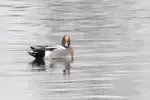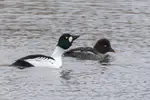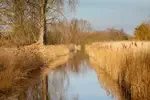- Home
- Cambridgeshire walks
- English Bluebells
English Bluebells: Photography Tips
Brampton Wood in Cambridgeshire is a haven for photographers in the spring, with its vibrant display of wild English bluebells making for a stunning subject.
This ancient woodland, with its 900-year history, provides a unique and enchanting backdrop that adds to the allure of the bluebells, making them a joy to photograph.
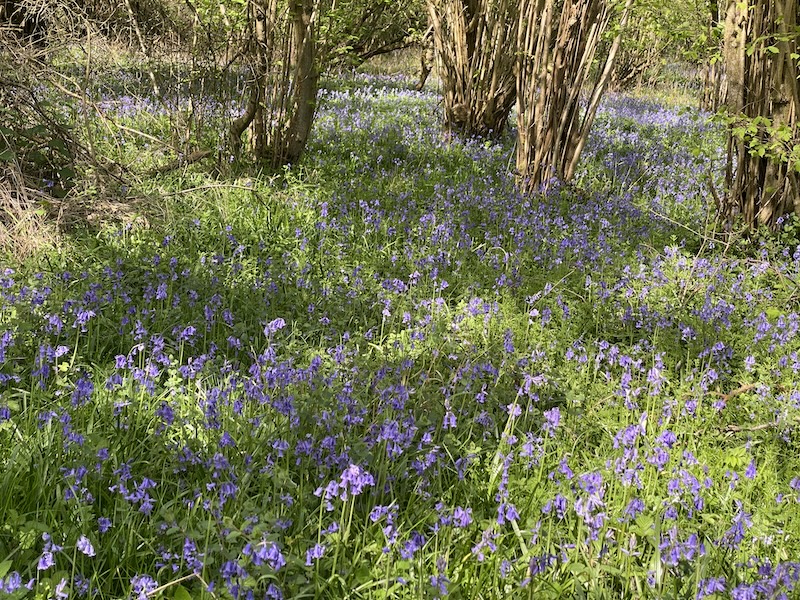
The wood's most breathtaking bluebell display is found at a specific corner, where large patches of blue cover the ground.
This spot offers a unique opportunity to capture stunning woodland photos and intimate close-ups amidst the beauty of spring.
Maximise your enjoyment of the fleeting English bluebell season with these tips.
🛠️ More things to see in Spring
Finding the bluebells
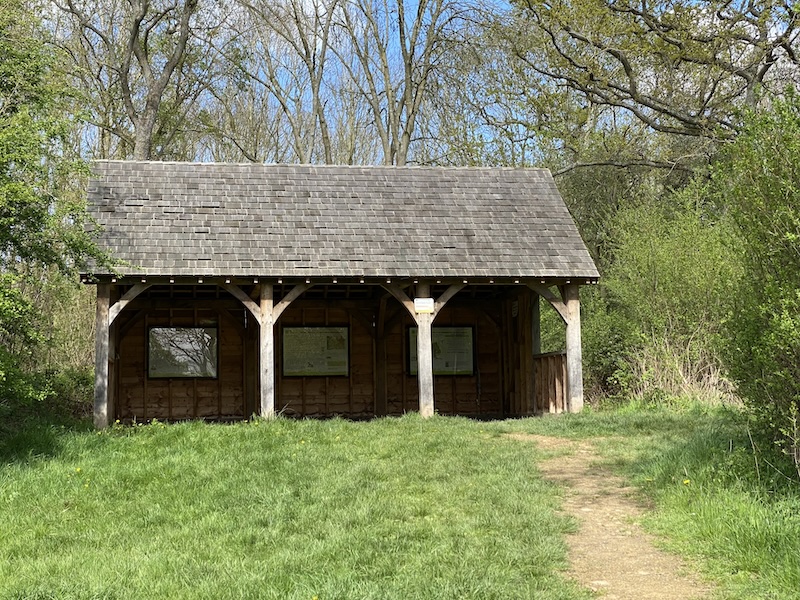 The information centre at Brampton Wood
The information centre at Brampton WoodTo reach the bluebells at Brampton Wood, you can take one of two routes:
- Go to the information centre from the main gate and take the right pathway behind it, following the wood's edge. Be aware that this route may be muddy or impassable in April.
- For an alternative route, take the Main Ride pathway, turning right at the Cross Ride, to reach the same corner of the wood.
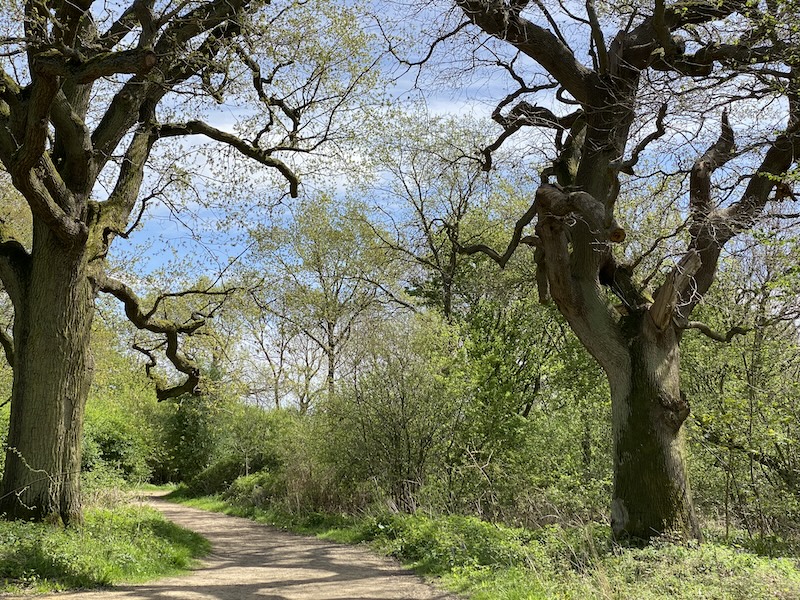 Heading for the Main Ride
Heading for the Main Ride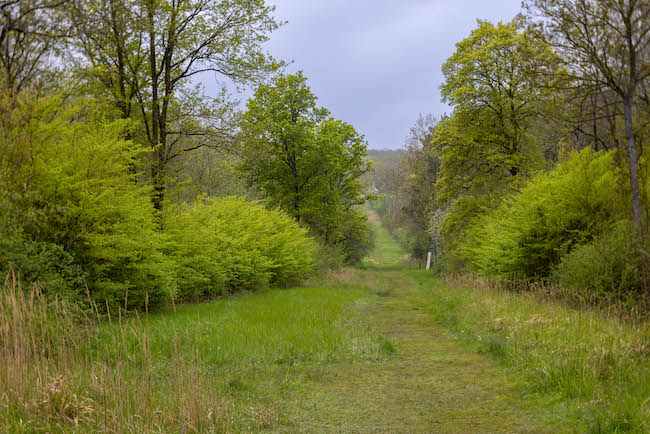 Looking back down Cross Ride from the corner where the bluebells bloom
Looking back down Cross Ride from the corner where the bluebells bloomThe best time to photograph bluebells
Timing is essential to capturing bluebells at their peak.
Soft, diffused lighting brings out the best in bluebells, making early morning or late afternoon the best times to visit.
Photography Tip:
Consider shooting in light drizzle or morning dew to add a fresh, moody atmosphere to your bluebell photos. However, avoid heavy rainfall, as it can wash out colours and make pathways muddy.
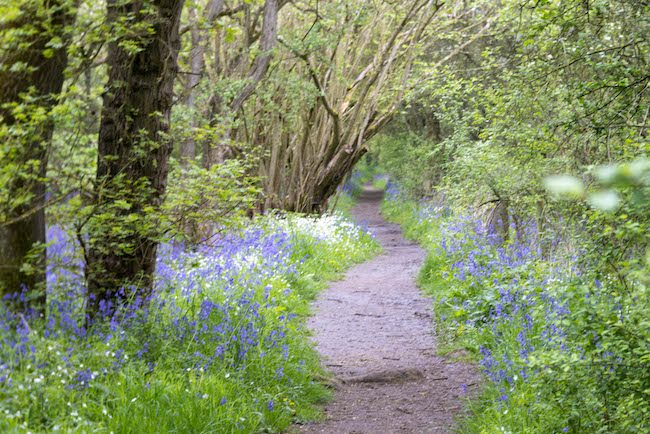 The muddy path through the bluebell woods
The muddy path through the bluebell woodsPhotographing bluebells
Equipment and settings
The following gear will help you capture the best photos of english bluebells.
- Camera: For woodland photography, use a DSLR or mirrorless camera with manual settings that excels in low-light conditions.
- Lens: Choose a lens that suits your shot: a 50mm prime or macro lens for isolating individual flowers, or a wide-angle lens for capturing expansive scenes like a bluebell carpet.
- Tripod: A tripod is a must-have for low-light photography, as it stabilizes the camera, allowing for slower shutter speeds and artistic, soft-focus shots.
- Lensbaby Velvet: To achieve a dreamy, soft-focus effect in your photos, try using a Lensbaby Velvet lens.
Control the focus of your flower photography with aperture size:
Use a small aperture (f/8 or smaller) for sharp, detailed shots or a wide aperture (f/1.8) for soft, artistic effects.
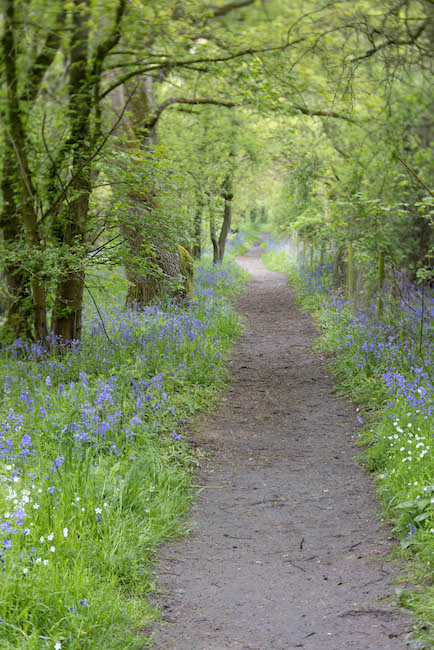
Creative Composition Ideas
When composing your bluebell shots, consider these creative approaches to make your images stand out:
- Use leading lines: Use woodland paths or streams as leading lines to direct the viewer's attention to a focal point, such as a tree or sunset.
- Foreground, Middle Ground, Background: Create depth in your image by layering a close-up of a bluebell in the foreground, with a larger expanse of flowers and trees in the middle and background.
- Low Angles: Shoot from a low angle, such as ground level, to capture bluebells from a unique perspective, and use a wide aperture to blur the background and emphasize the flower.
Photography Tip:
When taking low-angle shots, bring a plastic sheet to lie on. This simple trick protects your gear from damage and keeps your clothes clean.
When composing a shot, watch out for stray elements that can distract from the main subject, such as the piece of dried grass in the lower left corner of the photo below.
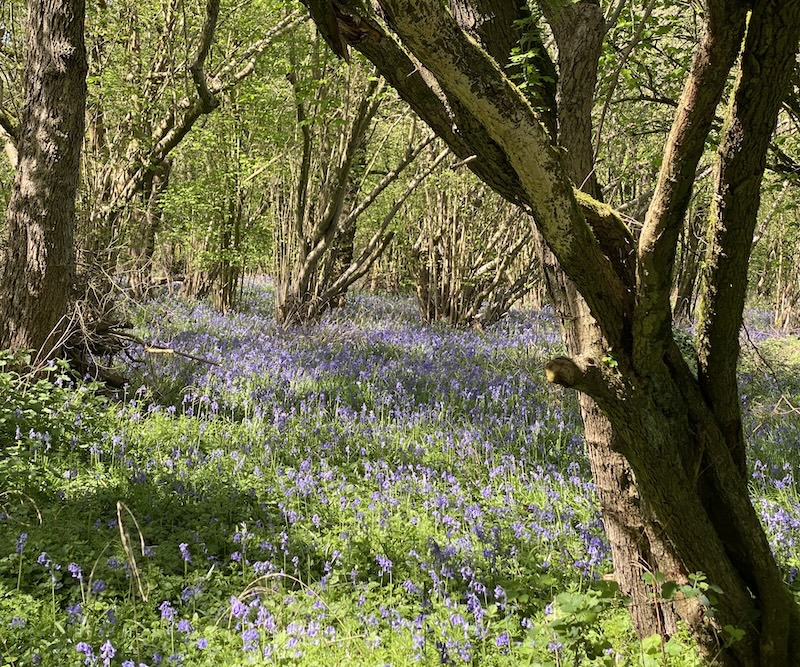 English bluebells in the wood
English bluebells in the woodSpanish or English Bluebells?
English and Spanish bluebells can be easily mistaken for one another, but they have several key differences that set them apart.
One way to distinguish between the two is by looking at the leaves: Spanish bluebells have wider leaves than their English counterparts.
The stems of English bluebells tend to droop, whereas Spanish bluebells have straighter stems.
The flowers of English bluebells are typically a deeper blue or purple, while Spanish bluebells can be lighter or even pinkish in colour.
Another distinguishing feature is the petal tips: English bluebells have curled tips, whereas Spanish bluebells do not.
Why should we be concerned?
Spanish plants can outcompete and hybridise with native English bluebells, putting their conservation at risk.
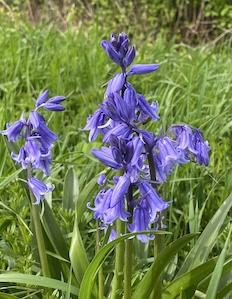 Spanish bluebells
Spanish bluebells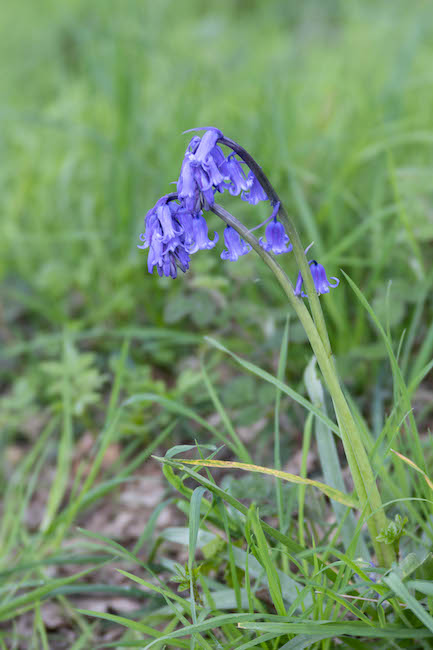 English Bluebells
English BluebellsPost-Processing Bluebell Photos
Refine your bluebell photos in Lightroom or Photoshop to bring out their natural beauty without over-processing.
- Boost colour saturation: Enhance the colours of the flowers and foliage by slightly increasing the saturation of blues and greens.
- Adjust exposure: Woodland settings can lead to dark images, so you may need to use exposure adjustments to brighten your shots without losing detail in the highlights.
- Sharpening: For close-up or macro flower shots, use subtle sharpening to bring out the details of the delicate flowers.
Conservation Considerations for Bluebell Photographers
When photographing bluebells, remember to respect their protected status in the UK.
Stay on designated paths, avoid trampling the flowers, and never pick them. This ensures your photography promotes their conservation without causing harm.

About the Author
For me, it’s never been just about bird names or camera settings, but the thrill of seeing a distant speck turn into a hunting kestrel.
After years of learning how to notice and photograph those moments, my camera has become the tool - and this site the field notebook - where I share what I’ve discovered.
If you’re ready to look a little closer, you’ll find the trips, lessons, and small wins that can help you see and photograph the wildlife right on your doorstep.
Step Behind the Wild Lens
If you've enjoyed your time here, the journey doesn't have to end.
I send out the Wild Lens newsletter on an occasional basis. It's where I share my latest field notes, the stories behind my favourite photos, and practical tips that don't always make it onto the site. It's your dose of quiet magic, delivered right to your inbox.
Join our community of curious explorers.




